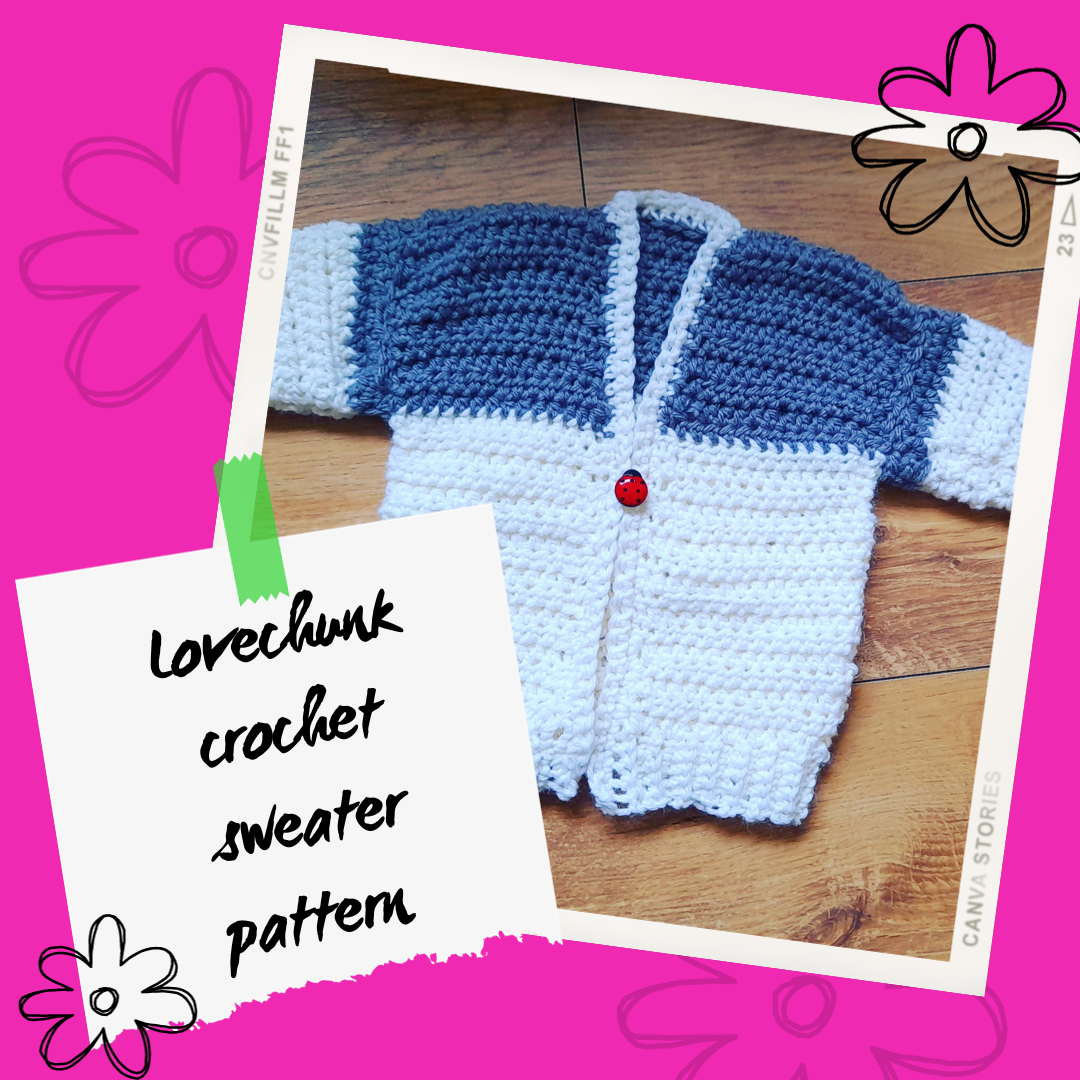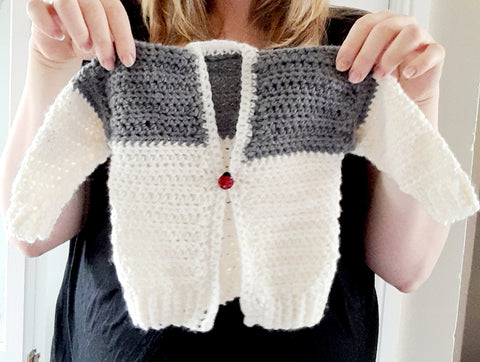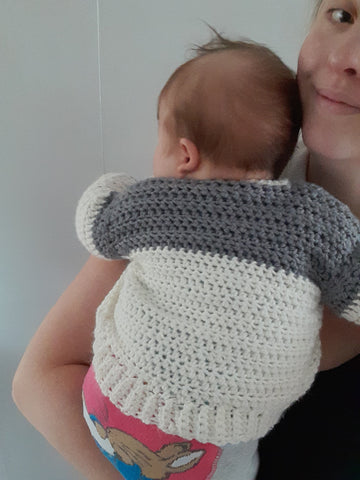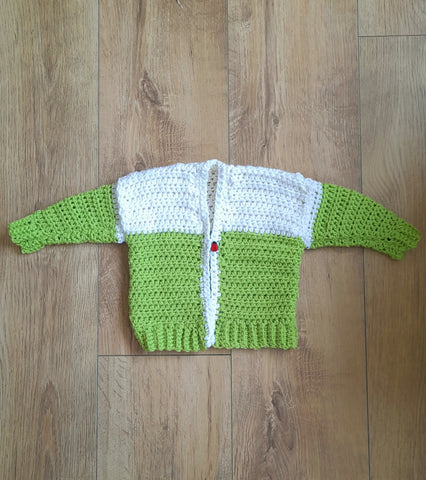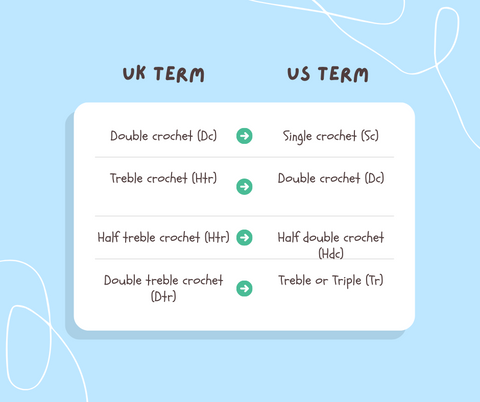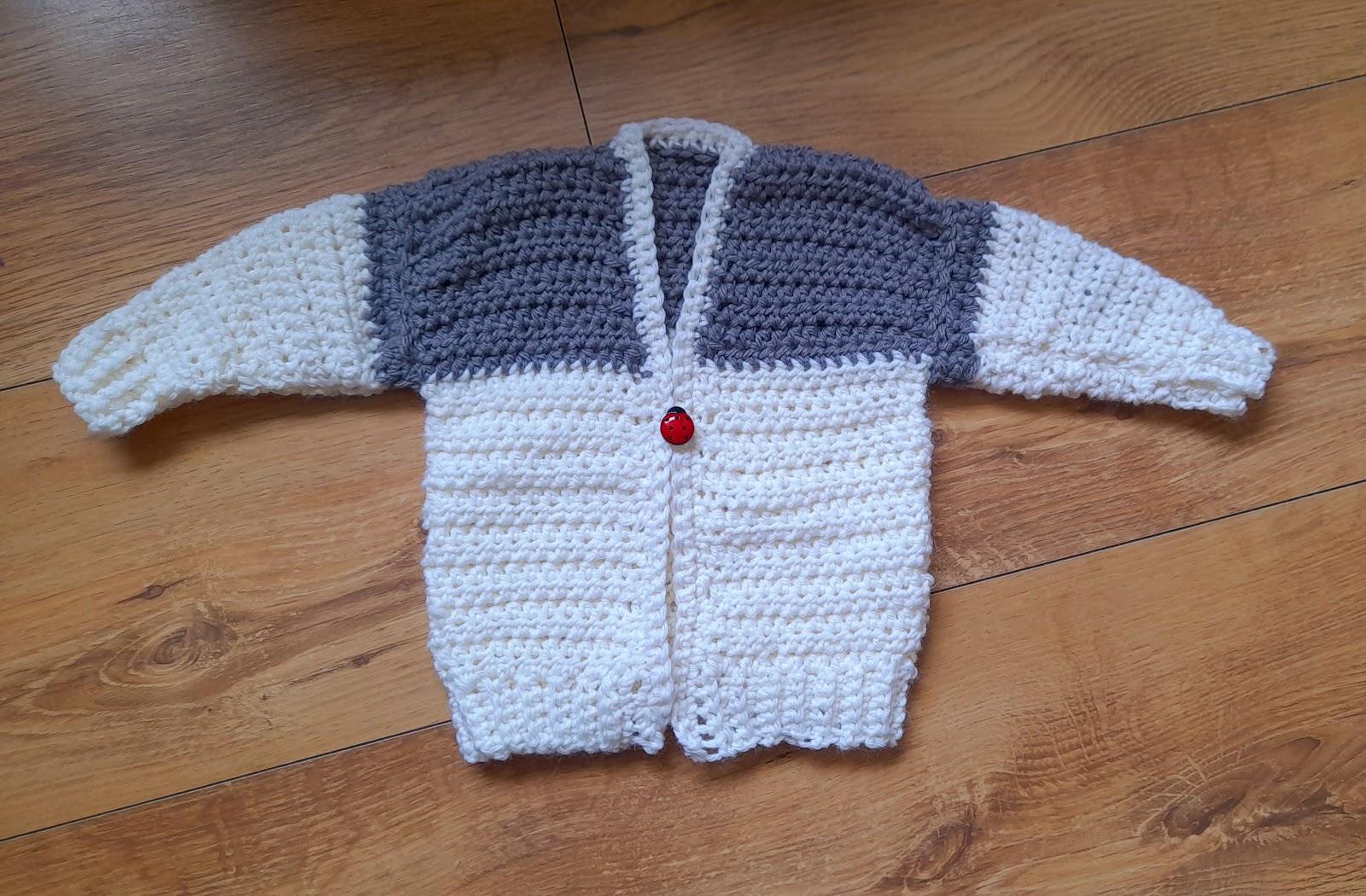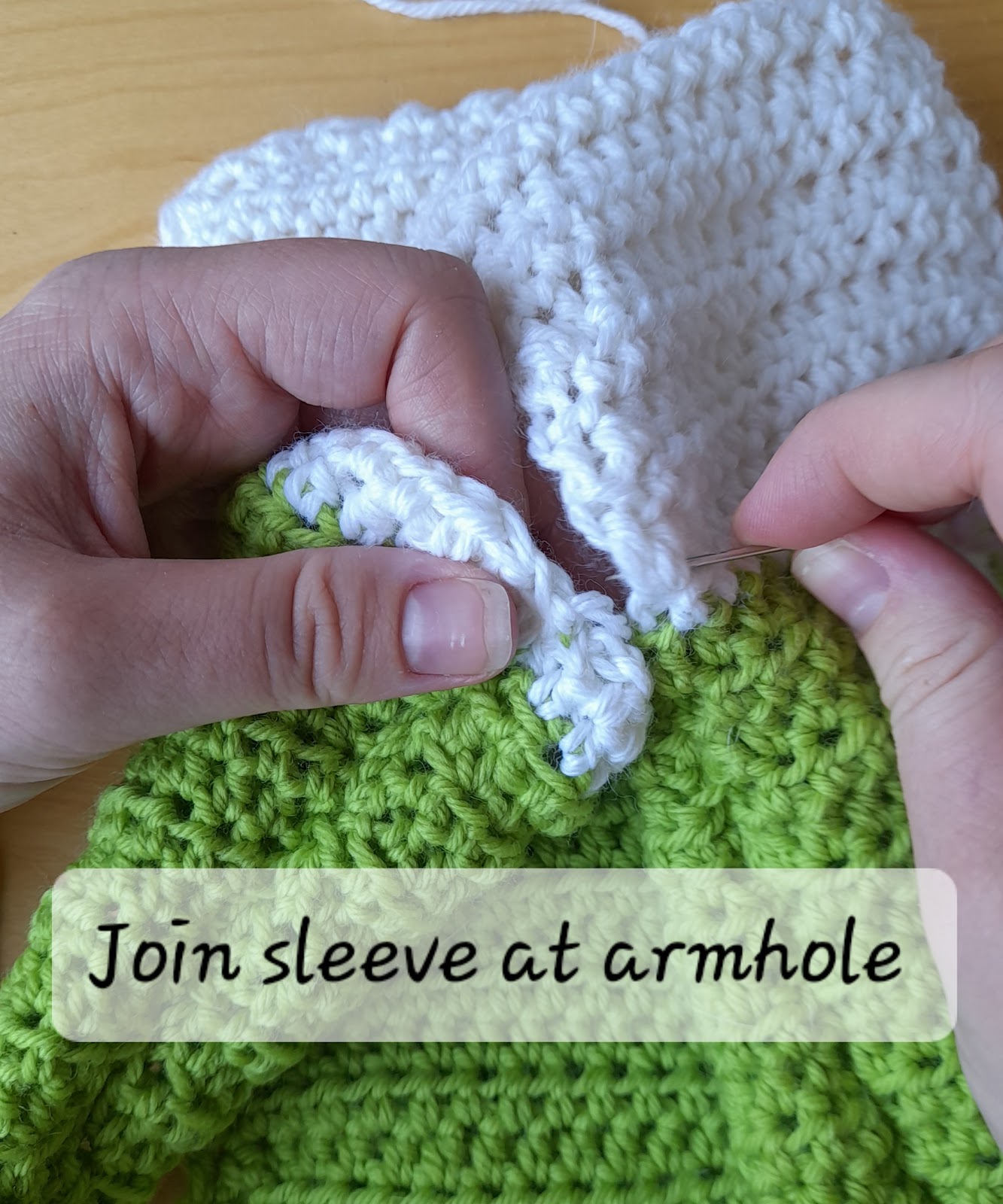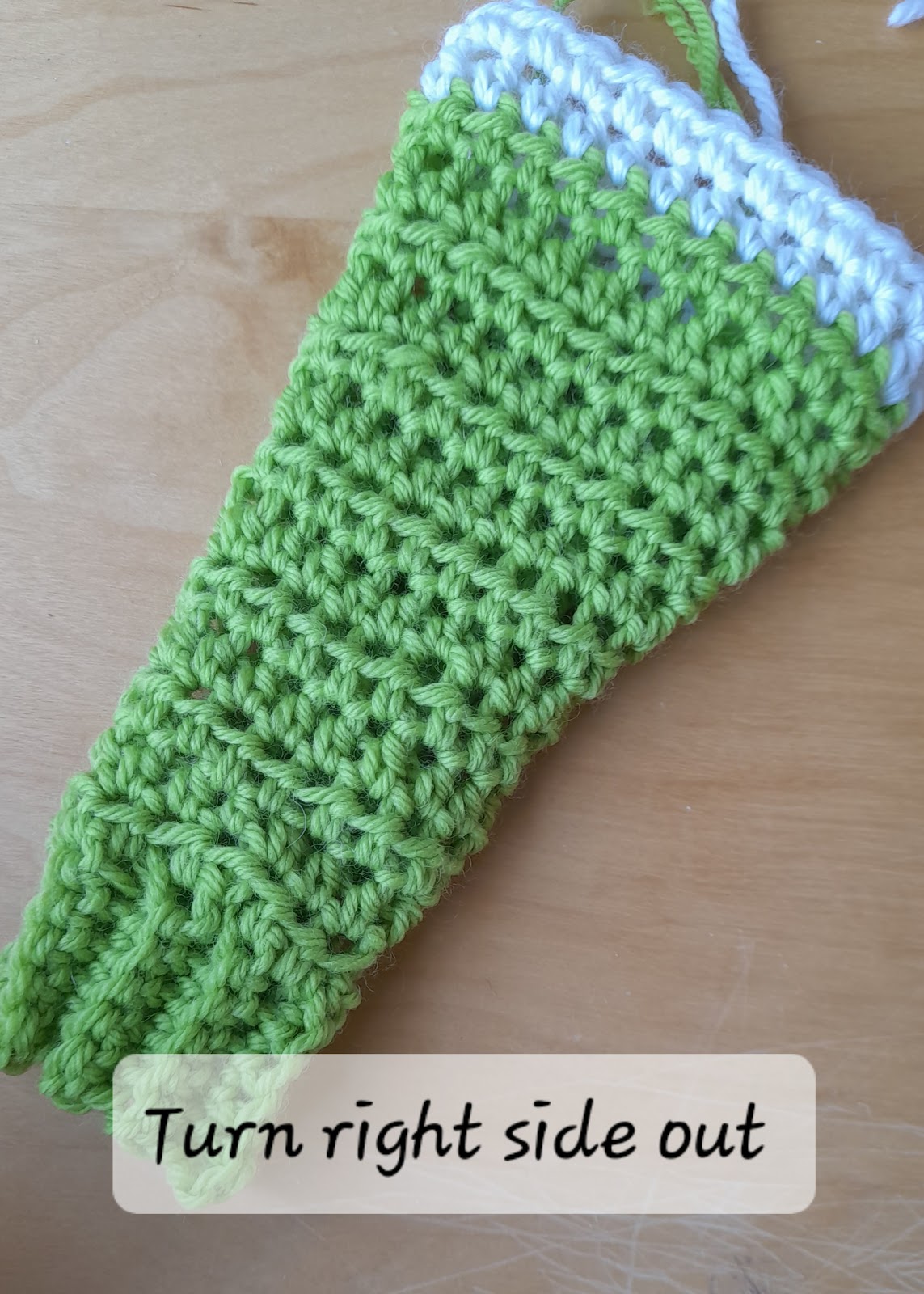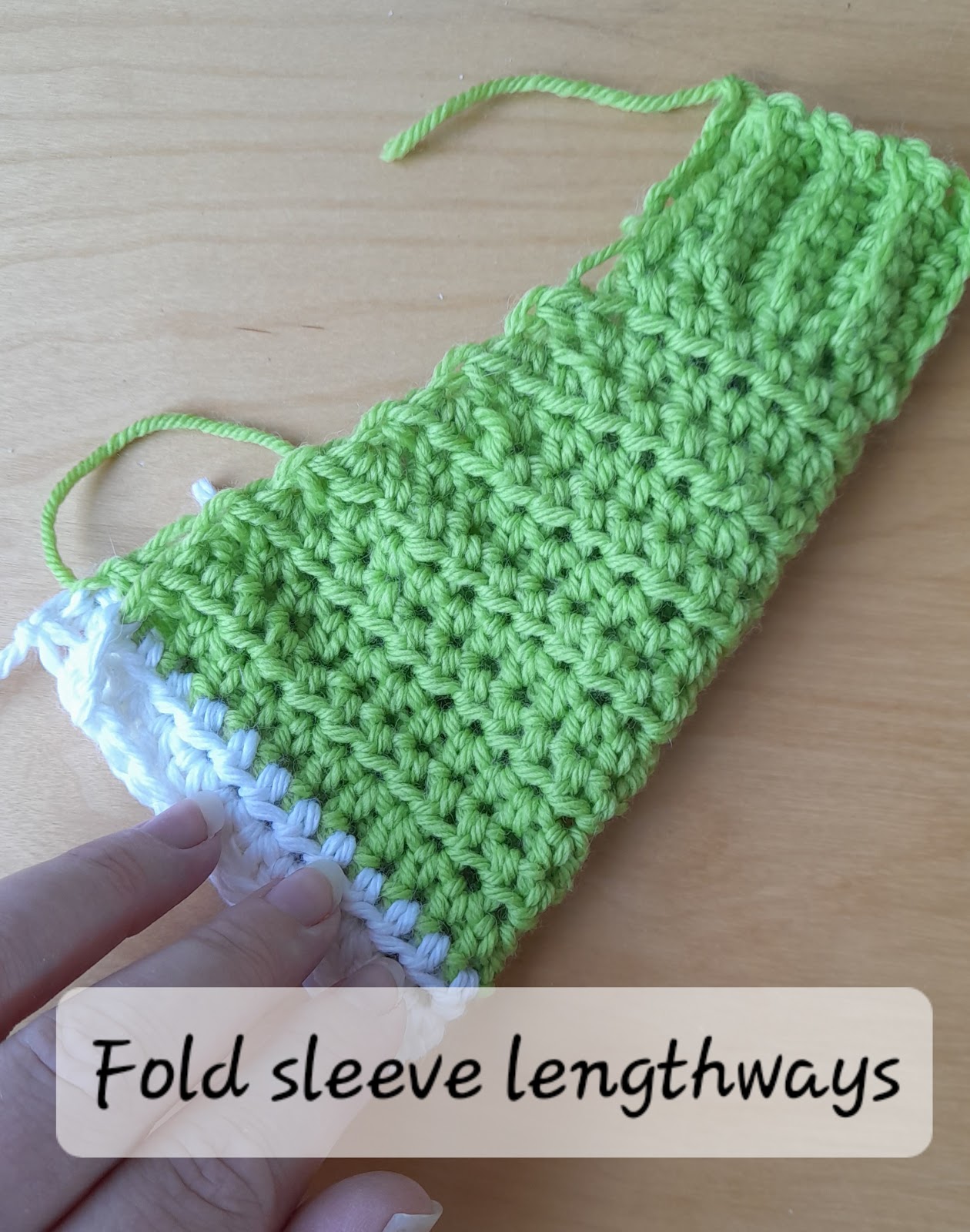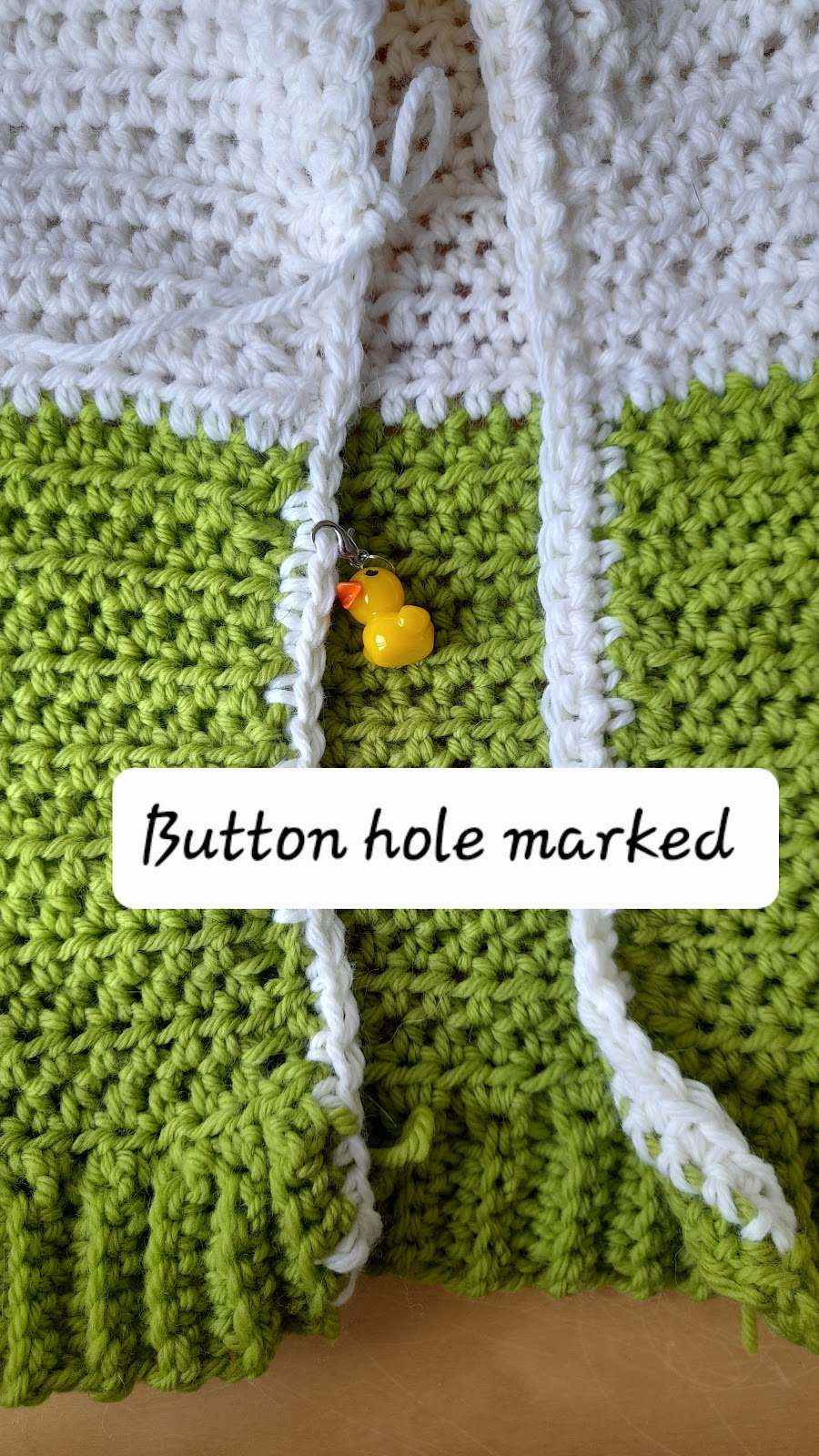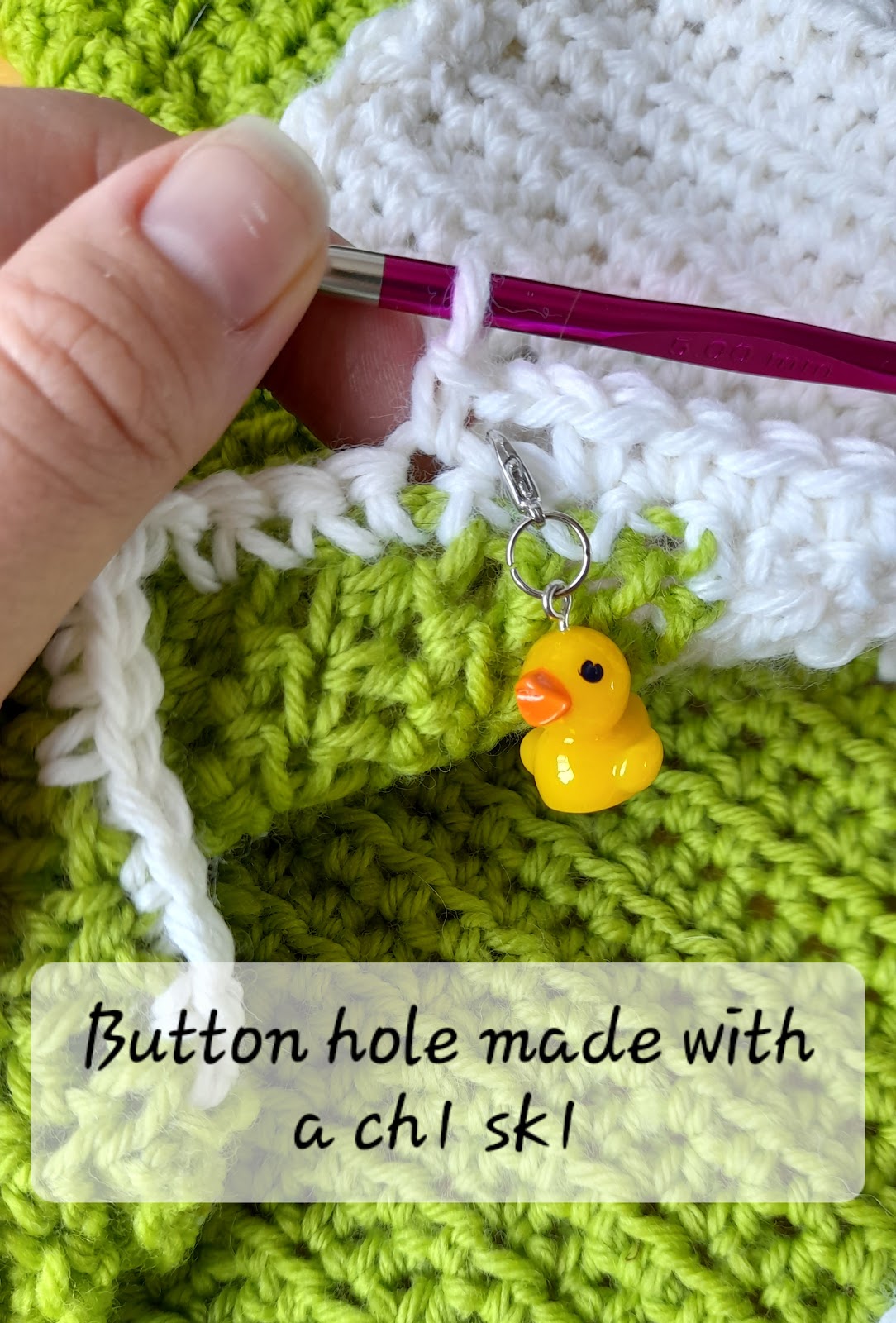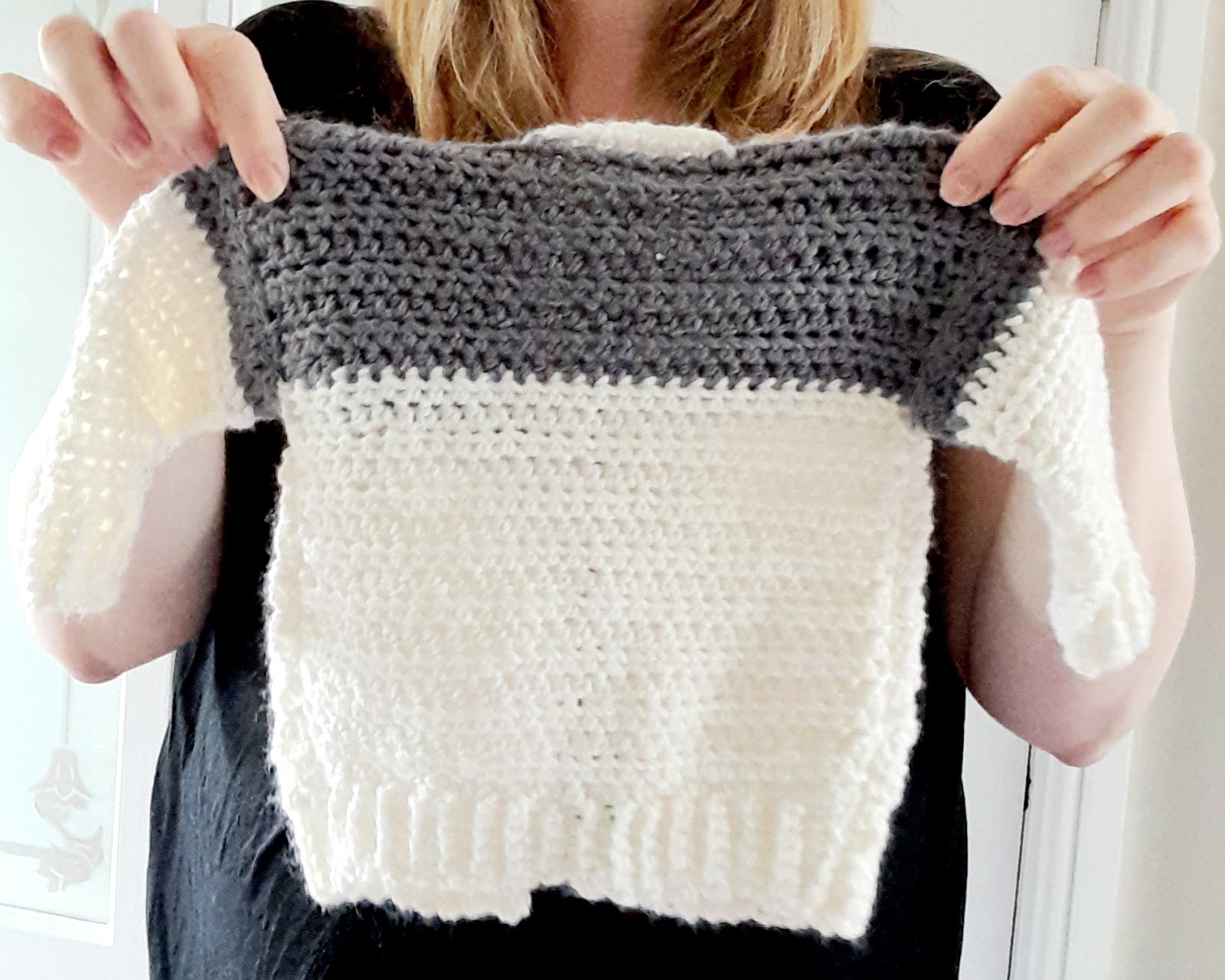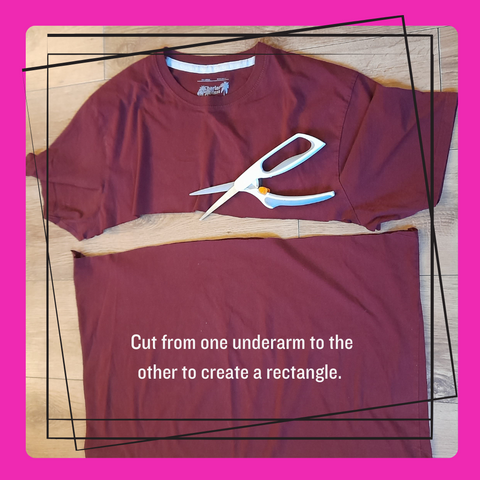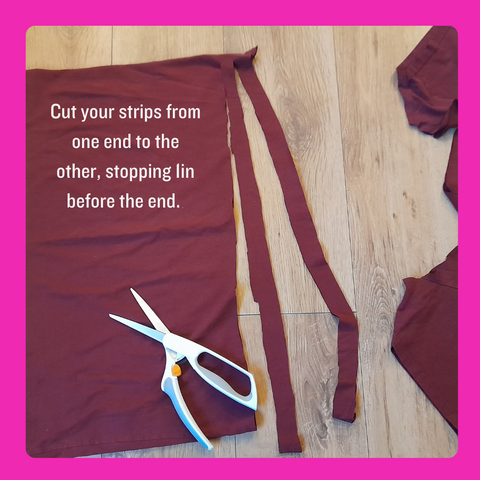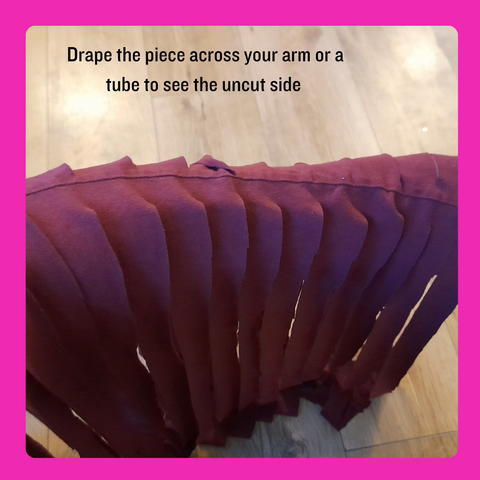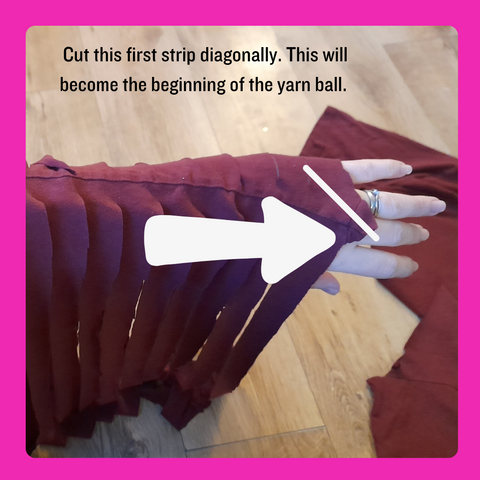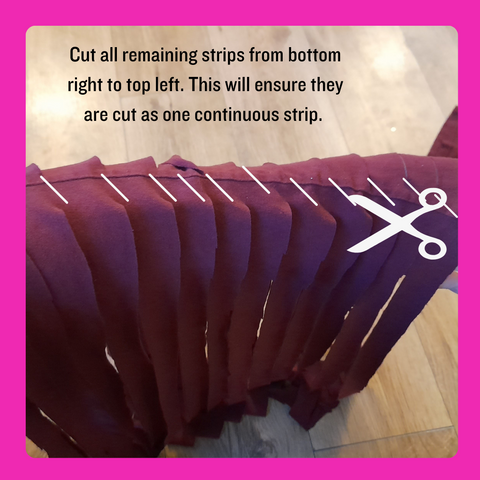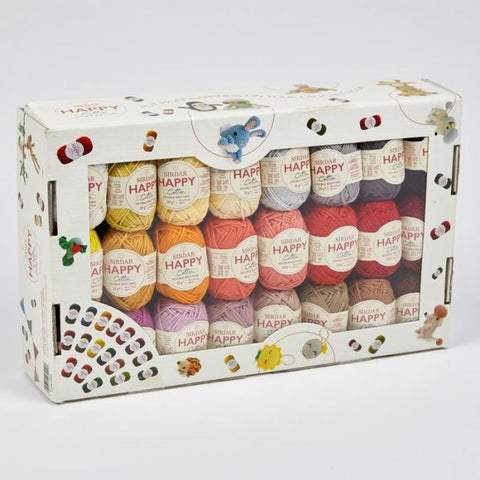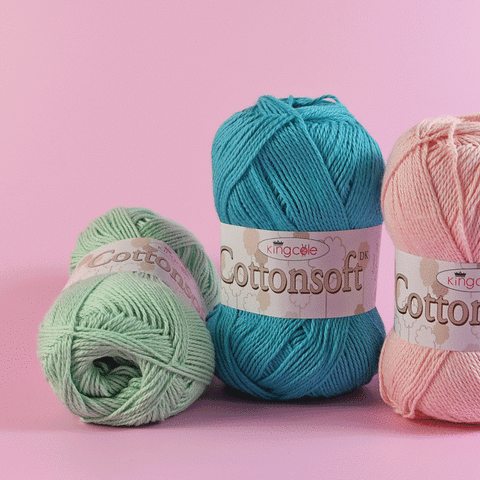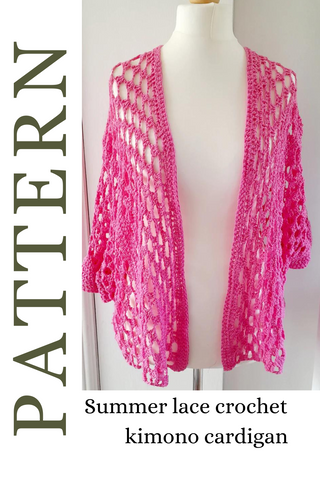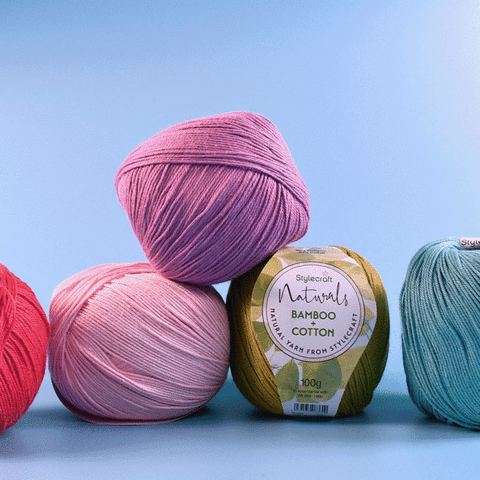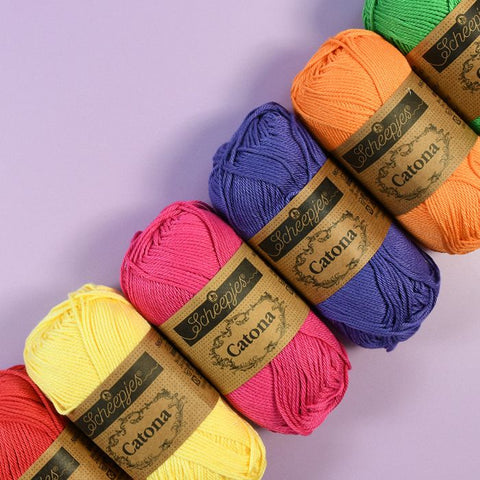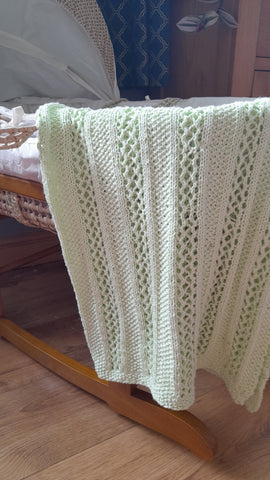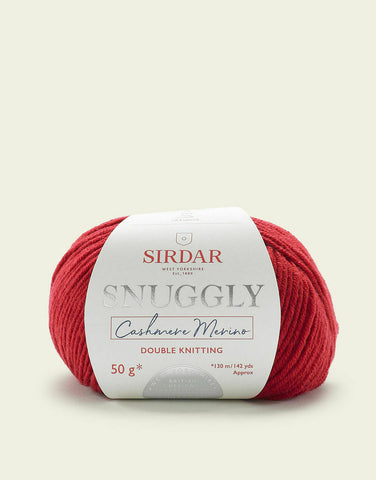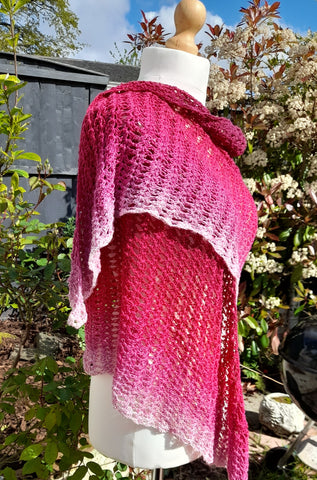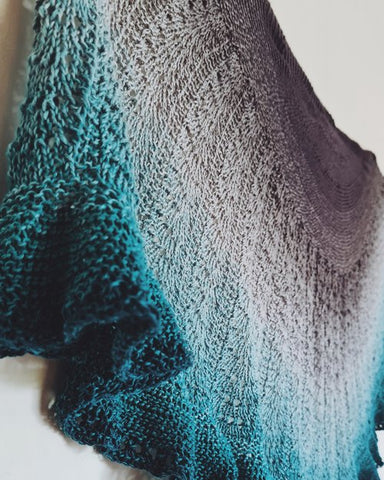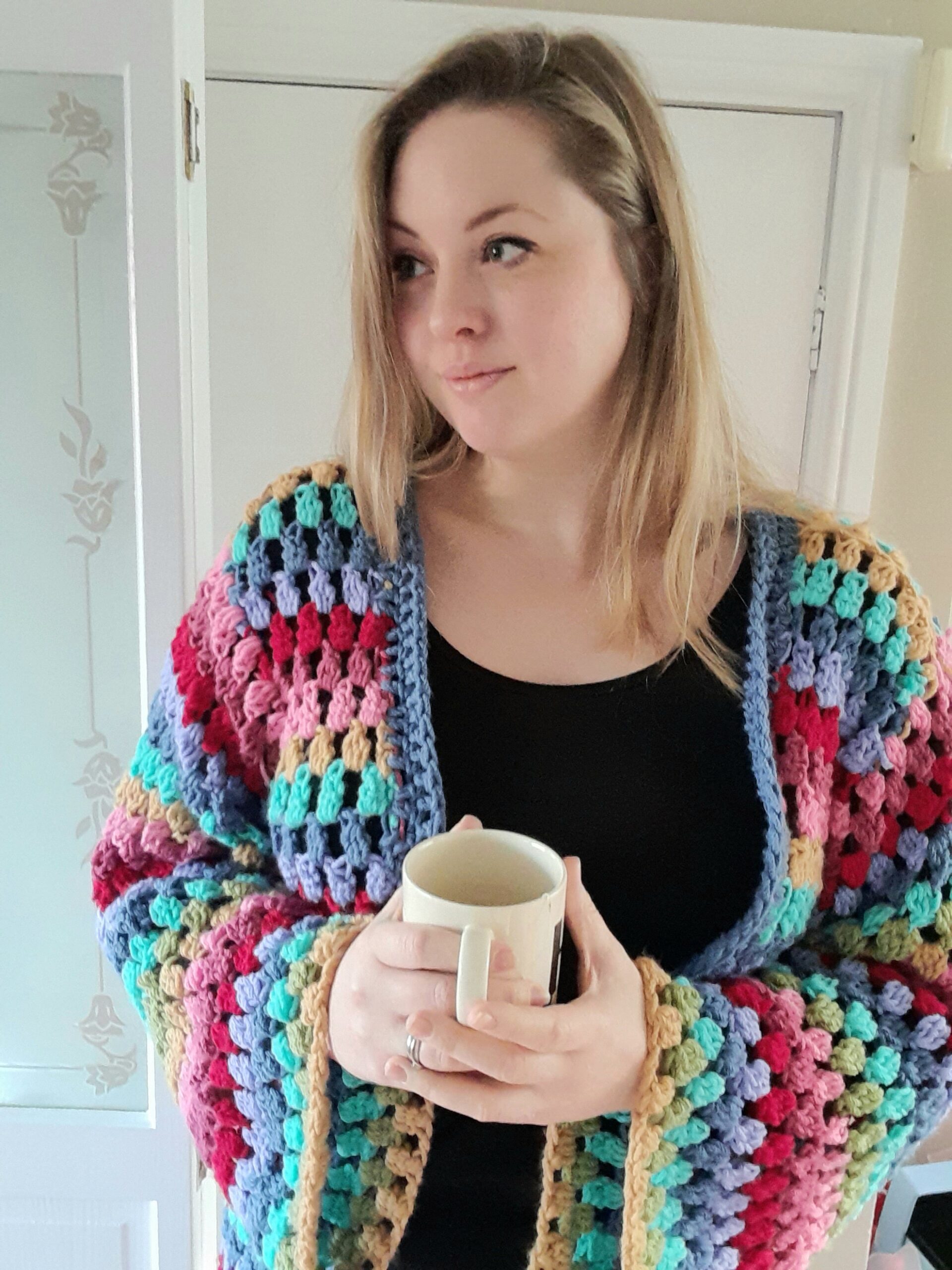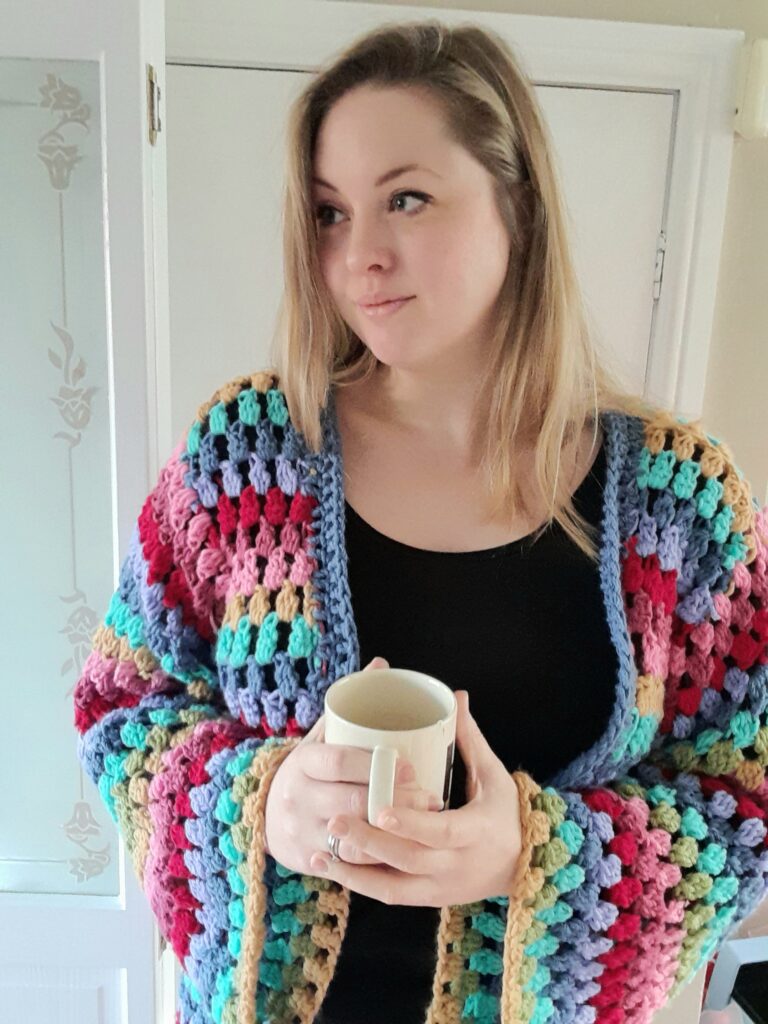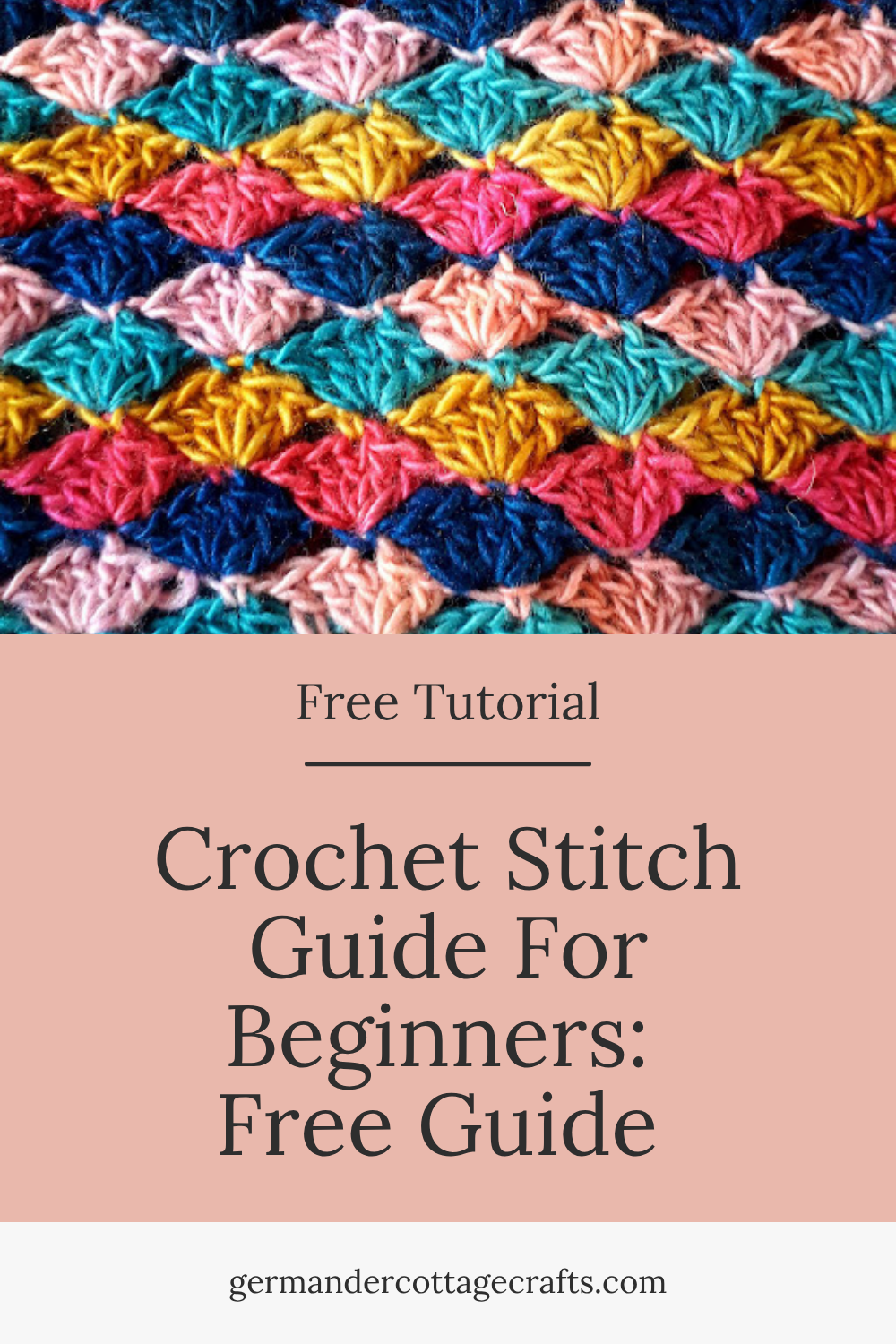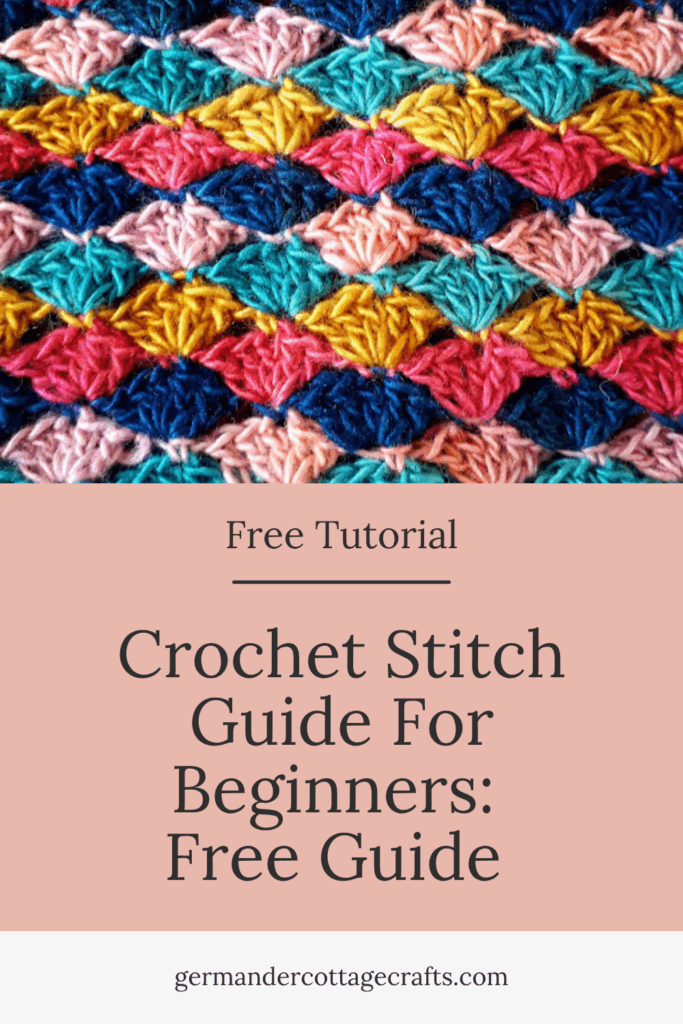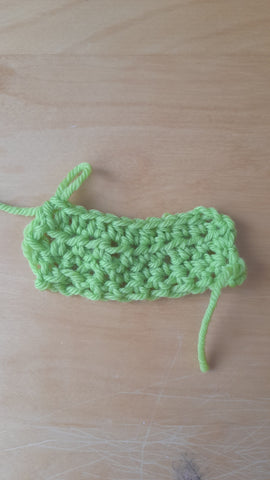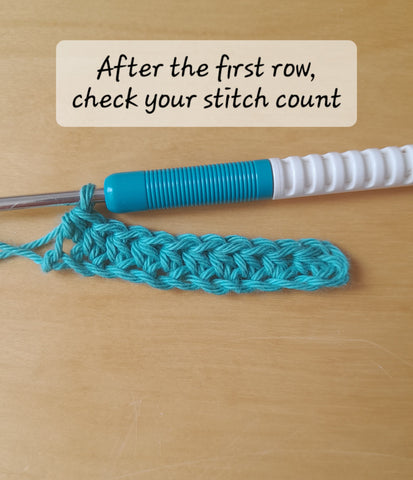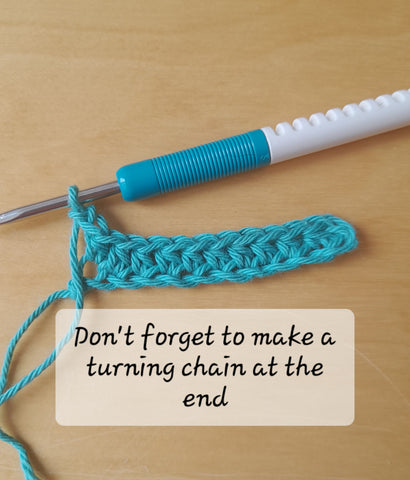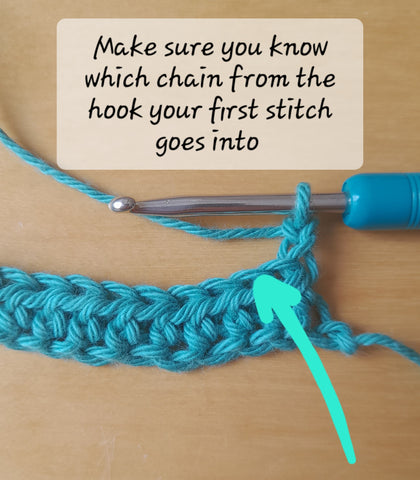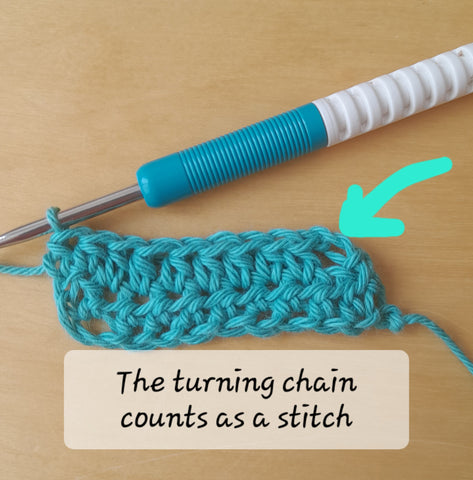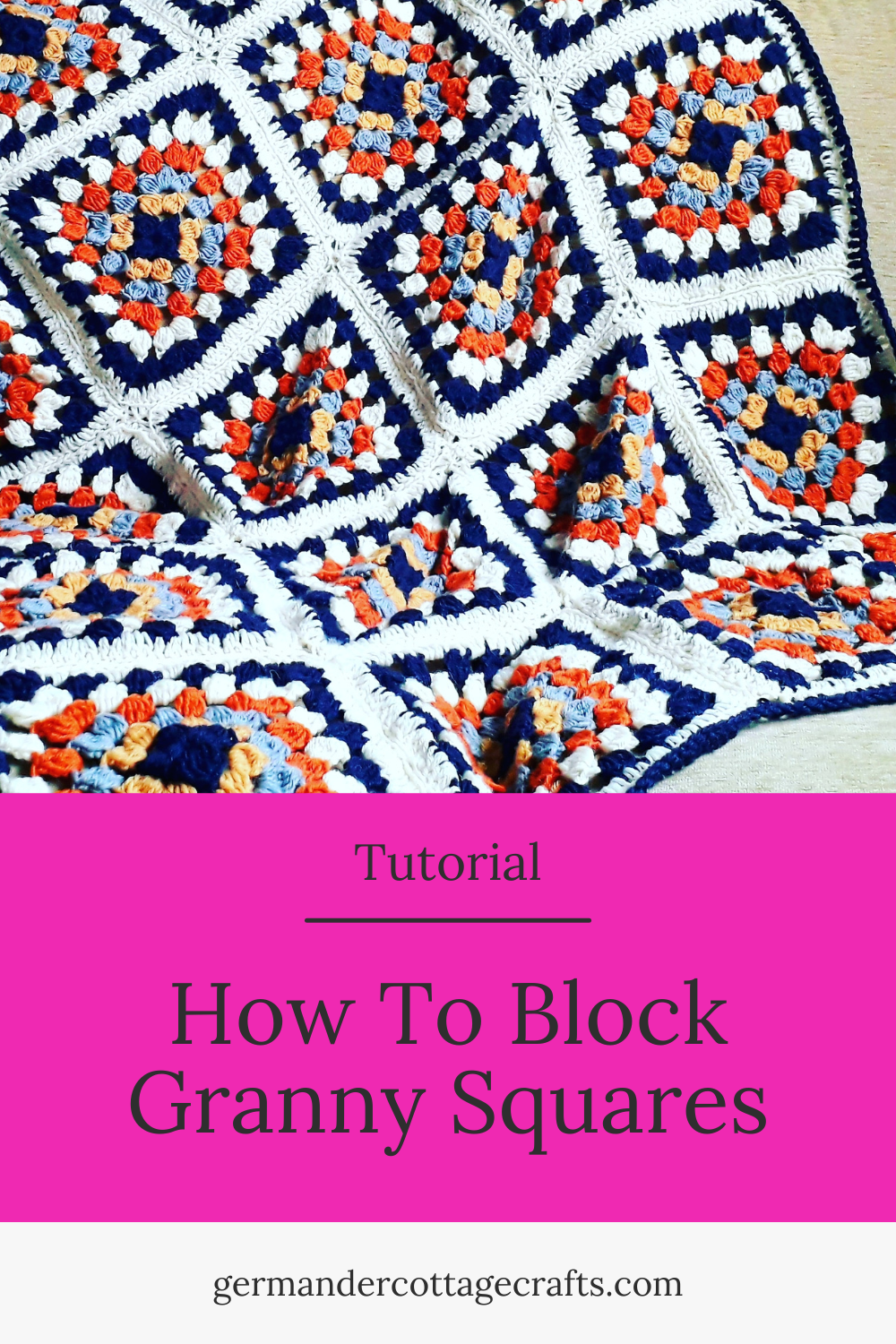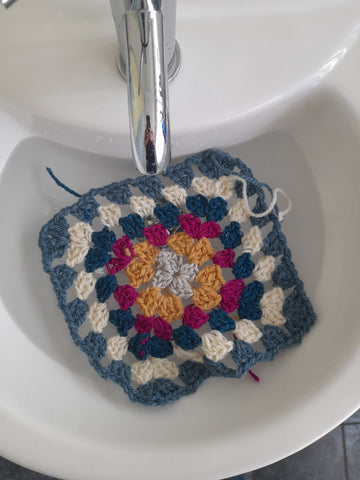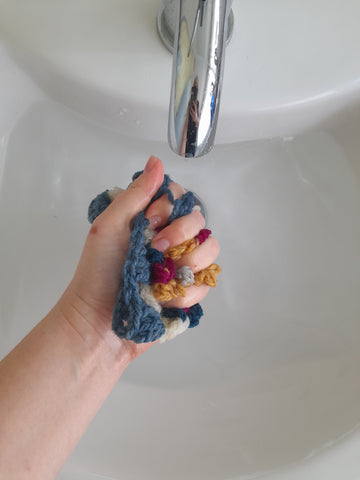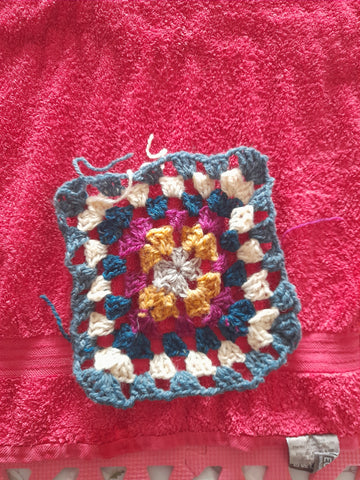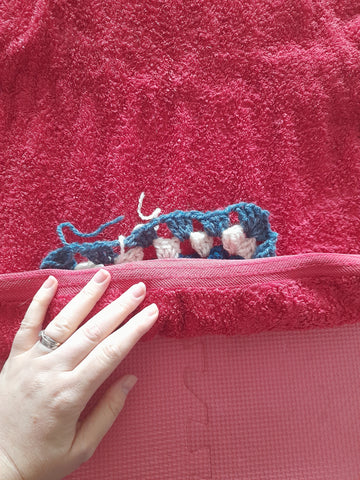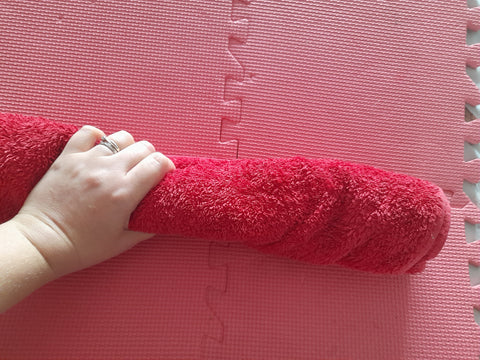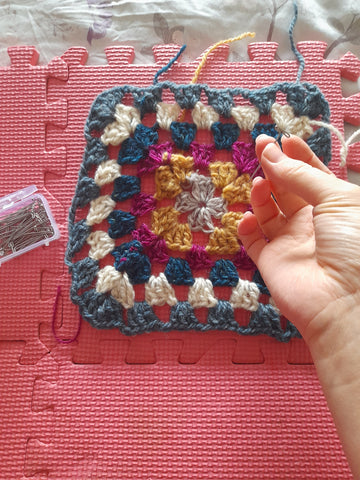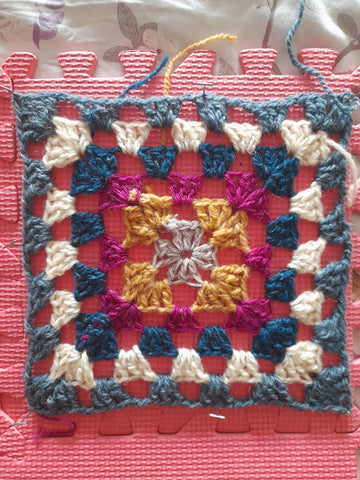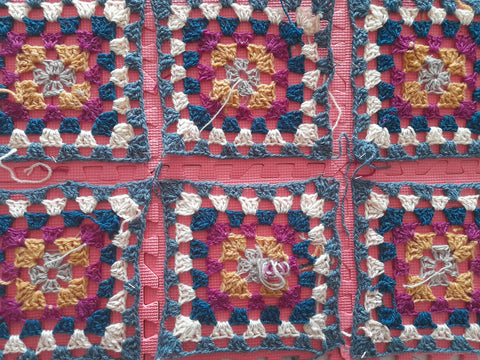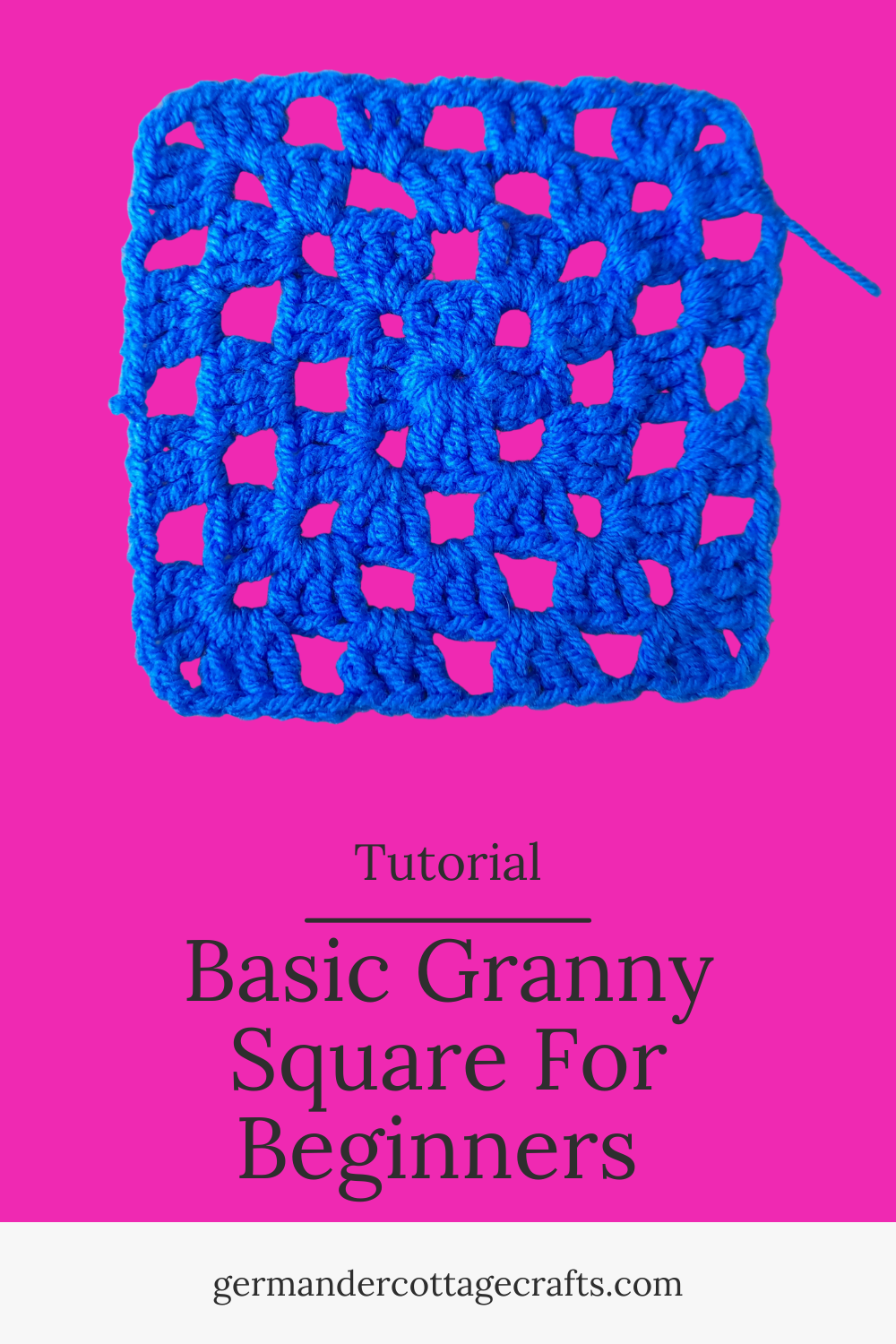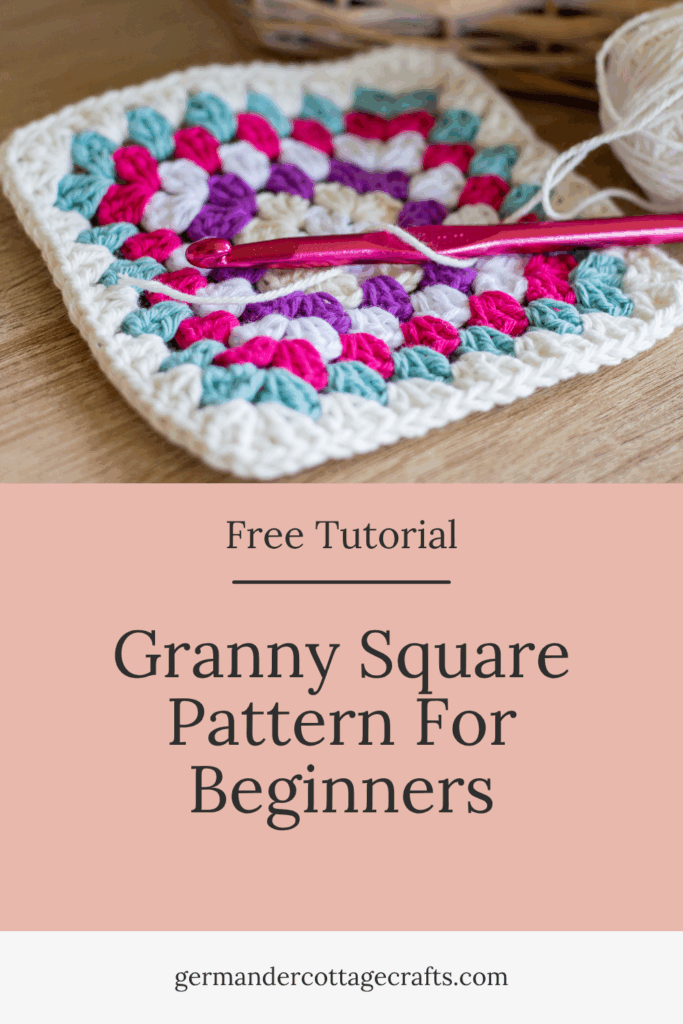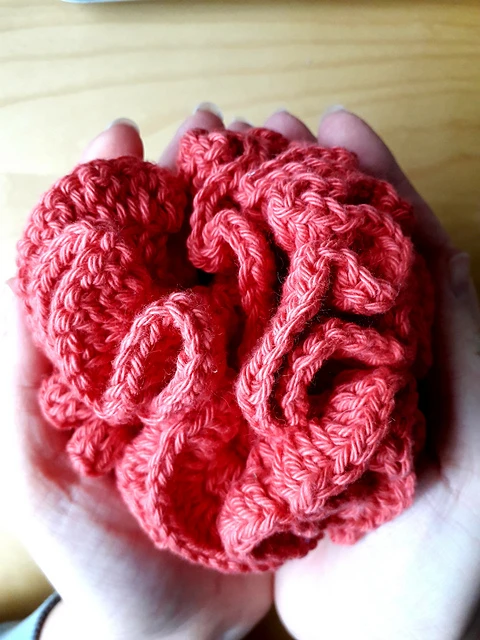Sometimes you just need a simple crochet neck warmer. Not only will this pattern look good with one, two or more yarns but it is a great stash buster and easy to make.
The betwixt cowl is a design that has fun between the lines. Mix two or more colours of yarn to create this woven look. Crocheting the Betwixt cowl is much easier than it looks. The basic stitches required for this pattern are:
- Chain (Ch)
- Single crochet (Sc) also known as UK double (Dc)
- Half double crochet (Hdc) also known as UK treble (Tr)
Everything else in the pattern is built from these stitches. An example of this is the Back post and front post half double crochet.
Here is how you do the front post and back post half double crochet stitches:
Other stitches are included in the glossary below.
Glossary:
Pattern uses US terms throughout.
If you don’t know your crochet terms, find the handy crochet terms chart here.
CC: Contrasting colour
Ch: Chain. This either means yarn over and pull through a loop or it refers to the chain at the top of the previous stitch.
Back post Hdc: Yarn over, insert hook from back to front to back around post of corresponding stitch below, yarn over and pull up loop, yarn over and draw through all 3 loops on hook.
Front post Hdc: yarn over, insert the hook from front to back to front around the post of the stitch below, yarn over and pull up a loop, then yarn over and pull through 3 loops.
Hdc: Half double crochet (UK half treble)
Hdc rib: Front Post Hdc in the first stitch, Back Post Hdc in the second. Repeat to end.
MC: Main colour.
Sc(s): Single crochet stitch(es)
Sl: Slip stitch. Insert hook, yarn over and pull through.
St(s): Stitch(es)
Yarn used to create the Betwixt crochet cowl
The yarn I used to make this crochet neck warmer was a worsted weight. This is also known as aran or 10ply yarn. I would still recommend that you do a gauge swatch when choosing yarns as not all yarn thickness is the same as what it says on the label!
The yarn I used for my sample was Malabrigo worsted which is available in a rich variety of hand dyed shades. I used the colour Marine which is a really deep ocean blue.
The second yarn I used for the contrasting colour was King Cole Riot DK which, although it says “DK” as its weight, it met the worsted gauge required.
I loved how both of these colours interacted. You’ve got the backdrop of a semi solid dark shade and the jewelled tones of waterlily. The pale pinks, greens, silvers and yellows worked as an excellent contrast for this pattern.
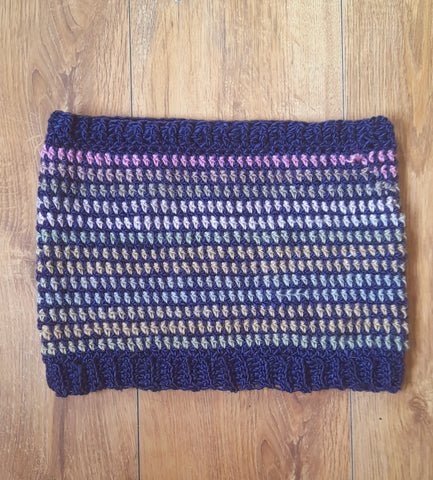
The idea behind the design of this cowl pattern
I designed this cowl because I work with a lot of crochet beginners and a common error that beginners make is by inserting the hook in between stitches rather than on top of stitches. When you crochet a solid stitch such as Hdc, you usually insert the hook into the top of the stitch from the previous row to make a new stitch. In this case, I want crocheters to insert their hook between stitches. This creates a woven effect, especially if you use more colours like Joy did, here.
This crochet neck warmer is a quick, satisfying make!
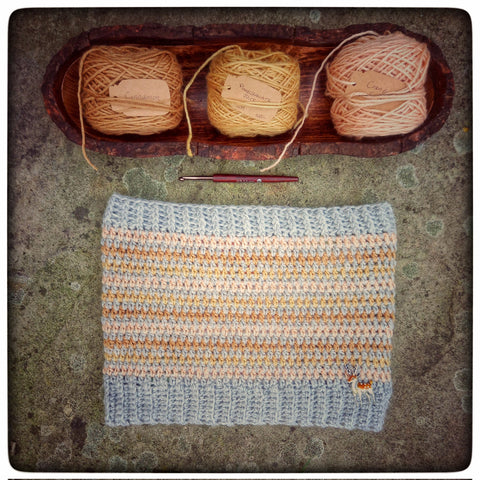
Photo credit to @JollyToadstool
- You can see the linked projects for the Betwixt cowl here on Ravelry.
- The PDF pattern is available here if you would prefer an ad-free download.
Betwixt Cowl: Crochet Pattern
Betwixt cowl 
The texture and clever placement of the half double crochet stitch gives this cowl its eye-catching stripes. Often, crocheters don’t mean to insert their hook in between stitches, but when you do, you can create effects like this!
Gauge:
12 Hdc sts and 15 rows = 10cm/4in using a 5mm (US 8) crochet hook.
Please swatch to meet gauge as I have quite loose tension. You may need to go up a hook size if there are fewer stitches, or go down a hook size if there are more stitches than stated.
Materials:
- MC–Malabrigo Worsted (100% merino wool). 190m/208yd per 100g/3.5oz. Sample shows yarn in Marine colourway.
- CC–King Cole Riot DK (70% acrylic / 30% wool). 294m/322yd per 100g/3.5oz. Sample shows yarn in Waterlily colourway.
- 5mm (US 8) crochet hook, or size needed to obtain gauge
- Darning needle for weaving in ends
Measurements:
Piece measures 23cm/9in deep and 32cm/12.5in in circumference, after blocking.
Special stitch(es):
The Hdc stitches are made in between stitches of the previous round. Insert hook into the space between the stitches, not into the top of the previous stitch.
Helpful videos:
Hdc rib:
Hdc stitch:
Glossary:
Pattern uses US terms throughout.
CC: Contrasting colour
Ch: Chain. This either means yarn over and pull through a loop or it refers to the chain at the top of the previous stitch.
Back post Hdc: Yarn over, insert hook from back to front to back around post of corresponding stitch below, yarn over and pull up loop, yarn over and draw through all 3 loops on hook.
Front post Hdc: yarn over, insert the hook from front to back to front around the post of the stitch below, yarn over and pull up a loop, then yarn over and pull through 3 loops.
Hdc: Half double crochet (UK half treble)
Hdc rib: Front Post Hdc in the first stitch, Back Post Hdc in the second. Repeat to end.
MC: Main colour.
Sc(s): Single crochet stitch(es)
Sl: Slip stitch. Insert hook, yarn over and pull through.
St(s): Stitch(es)
How to make the Betwixt crochet neck warmer:
Setup:
With MC, ch 9.
Row 1: Insert into 2nd ch from hook. Sc to end. (8 scs total). Ch1, turn.
Row2: Starting in the 2nd ch from hook, sc in back loop of every st to end. 8 sts total.
Work 77 more rows. (78 rows total)
Body:
- Without fastening off, ch2 (counts as first st) and work 77 hdc along top of ribbing. Sl with first st to close round. Join CC and Ch2 in CC.
- Hdc in between every previous st. Sl to close round. Join MC and Ch2 in MC.
Repeat Row 2, alternating MC and CC, for 27 more rounds or until cowl measures 22cm/8.75in from edge. On last round, work ch2 in MC.
Top ribbing:
Continuing with MC, hdc rib for 4 rounds. Fasten off.
Finishing: Weave in ends and close gap in sc ribbing. Block to measurements.
Thank you for visiting my blog! Enjoy your pattern.
If you require any pattern support please don’t hesitate to leave a comment or email me at info@germandercottagecrafts.co.uk
Happy hooking!
